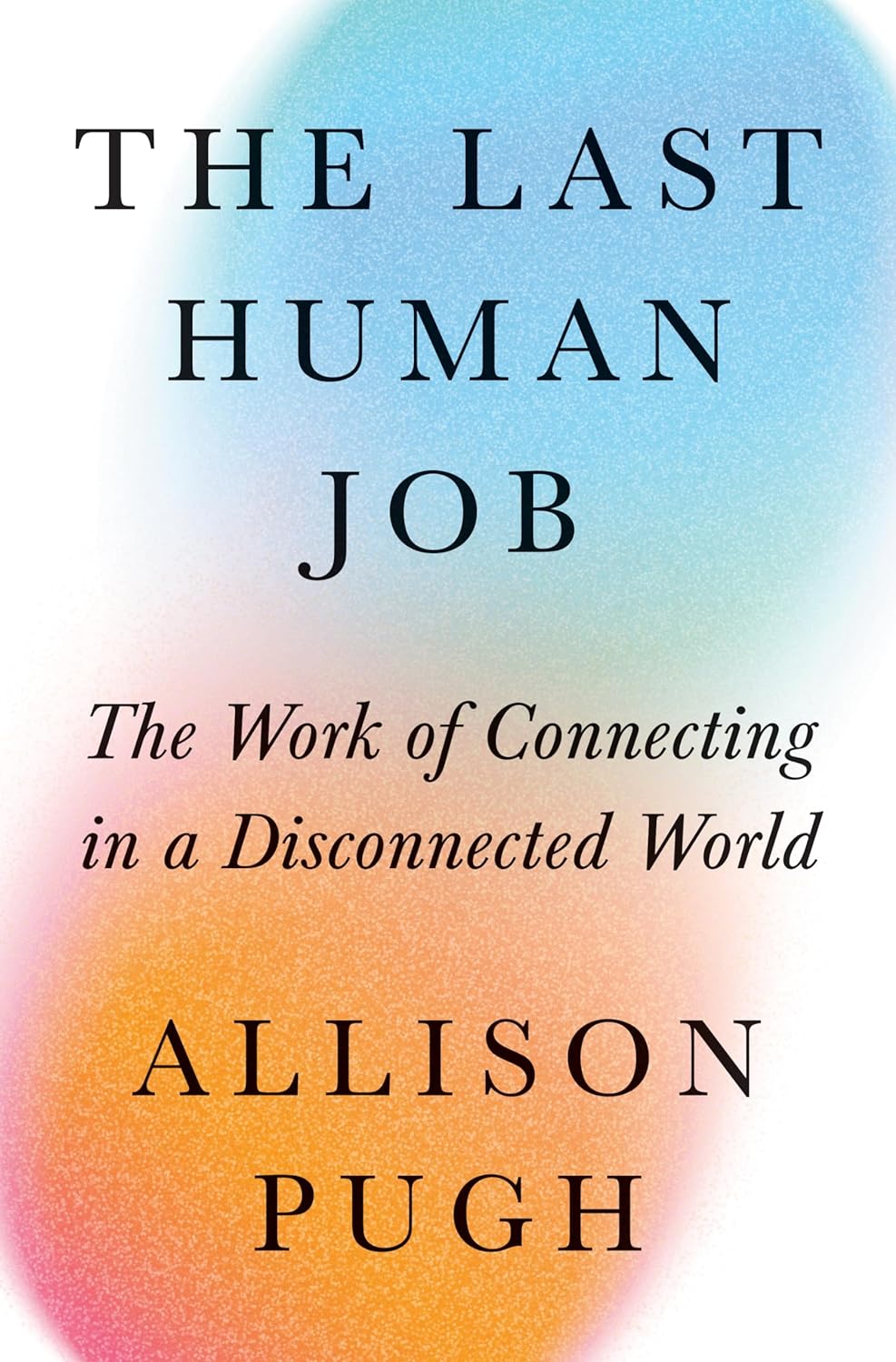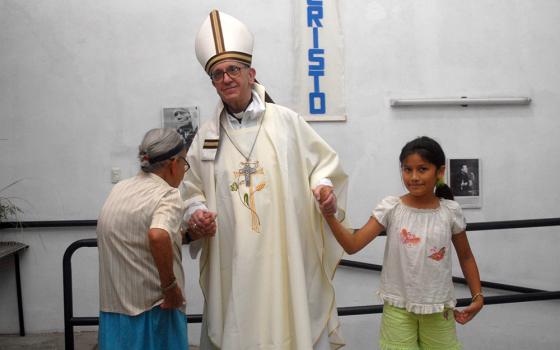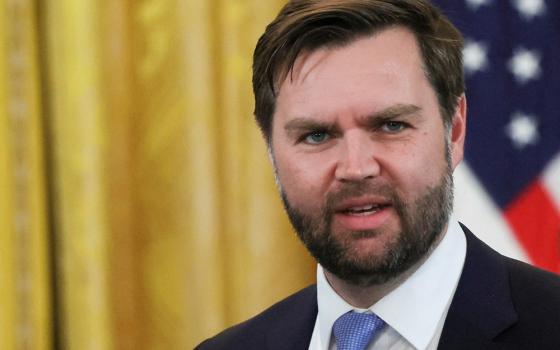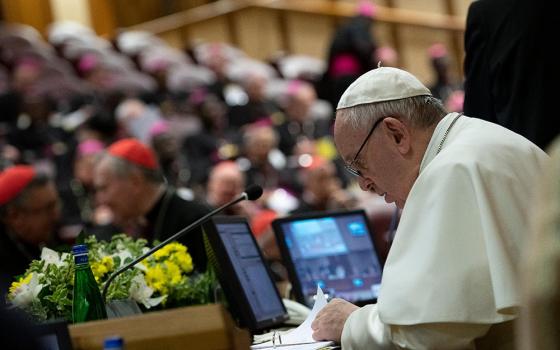
(Unsplash/Priscilla Du Preez)
A few years ago, Dutch grocery chain Jumbo rolled out a supermarket reinvention — checkout lanes staffed by humans, where shoppers could kibitz with cashiers as they rang up their carts. The "chat checkout" was designed to ease social isolation, especially among older shoppers. And its success relied on Jumbo employees, making human connection a key part of their jobs.
Sociologist Allison Pugh explores this "connective labor" — work that "involves 'seeing' the other and reflecting that understanding back" — in her new book, The Last Human Job: The Work of Connecting in a Disconnected World. Connection, Pugh found, is how teachers engage recalcitrant students and doctors convince nervous patients to take their medicine. It's why you feel better after getting your hair cut by a stylist who remembers to ask whether you got that promotion.

In fact, Pugh argues, connective labor plays an essential role in many professions, though it's rarely included in the job description. Research shows that "patients are more likely to comply with treatments prescribed by practitioners they believe understand them." Psychologists say that the "alliance" between therapist and patient is what determines the success of a treatment. A "small mountain of education research" has found that teachers' "caring support" for students' emotional needs has a key impact on learning.
But the work of building those bonds, Pugh argues, is facing existential threat. Eager to cut costs and maximize profit, employers are forcing practitioners to work faster and connect less, burying employees under ever-increasing client loads and paperwork. As one teacher explained to Pugh, "You run through about three hundred, four hundred kids a year. You just — you're just kind of a factory worker at that point." As another doctor put it, "There's always a sense of there's not enough time to do a good job of my job."

(Unsplash/Blake Wisz)
To illuminate what "connective labor" actually looks like, Pugh interviewed more than 100 people in high-touch jobs, including doctors, teachers, therapists, chaplains, hairdressers and community organizers. She sat in on humanistic medicine trainings, classes for aspiring school counselors and a hospital chaplain residency program. Pugh shadowed doctors at an HIV clinic and rode along with police officers.
Through this reporting, Pugh identified some common threads. Connective labor, she found, requires active listening and communication that helps the worker and the client feel seen. It requires compassion and emotional attunement, "when we not only hear what the other is saying but also grasp at an undercurrent of feeling." Most important, she found, it requires intimacy and radical vulnerability; a willingness to be open.
Primary care doctor Ruthie Carlson put these skills to use in the small Appalachian community where she started her career. At first, residents were suspicious of Carlson. But as she built relationships, Carlson gained the town's trust. People stopped in more frequently and began opening up about their most serious medical needs. One day, a 45-year-old man came into her clinic with a lump in his groin — cancer.
"Very quickly, I got to know the family," Carlson said. The man was living with and taking care of his mother; he quickly got so sick that Carlson had to do home visits. "I'd go there and we'd have dinner together. … They kind of looked at me as immediate family." When her patient died, Carlson was invited to sit with the family at the funeral.
Advertisement
Unfortunately, many professionals now struggle to build this kind of rapport, as cost-cutting companies push employees to work faster with fewer resources. Across fields, practitioners said they were stretched to the breaking point by demands to atomize their interactions, squeezing even more precious human contact out of their day.
Pugh spoke with burnt-out doctors frustrated by the ever-mounting piles of paperwork and hospital chaplains required to document each patient interaction in three separate data systems. One worker left a job she loved, coaching people with social anxiety disorders, because she couldn't juggle the growing client load. "In order to make it work financially, you will need to give the coaches as big a workload as possible," she said, meaning she would sometimes be required to work with 12 people a day.

(Unsplash/Alexander Grey)
As organizations look to increase efficiency, they sometimes turn to technology, outsourcing human interaction to computers. In one instance, Pugh visited a private school experimenting with a new educational model. Students spent much of their day in front of the computer, running through personalized lessons. Their human interaction was largely confined to meetings with "advisers," adults hired to offer guidance and support.
In another, she interviewed AI researchers who'd developed an AI couples counselor and a virtual nurse to help low-income hospital patients understand their complex discharge requirements. A majority of patients said they prefer the virtual assistant to a harried provider. As Pugh explains, that finding isn't all that surprising — when providers of emotional labor are pushed to the brink, they aren't able provide the kind of interaction that makes a sick patient, especially one with low-literacy or a host of other challenges, feel seen and understood. In that context, an AI bot with a specific function can help fill the gap.
But, Pugh asks, why not fix the underlying problem? Instead of pushing connective labor to the brink then offering virtual solutions, why not find ways to adequately staff these important roles? After all, even some AI evangelists concede AI can't really do the work of human connection.
"A lot of us who are dabbling in this are doing these really superficial aspects of relationship building," Geoffrey Janney, an award-winning researcher of emotional AI, told Pugh. AI agents are taught to nod, or offer an occasional "uh-huh" as clients talk. But they can't form the kinds of meaningful connections that lead to real understanding. "There's this veneer of sociality," he said. "It's like lipstick on a pig."
In her final chapters, Pugh highlights a handful of organizations doing just that. At one medical clinic for high-need patients, patients are seen for two hours by a medical assistant and doctor who work together to gather vital information, talk through concerns and answer questions. Medical assistants are partners in care, even accompanying patients to specialists. "If you look at the five percent of patients who cause 50 percent of the money [health care spending] in any given year, almost always relationships stuff matters and healthcare has blown it," clinician founder Gabriel Abelman told Pugh. "The way to get them healthier, and along the way reduce spending," he explained, "was to start with connection."
To save connective labor, we'll need more visionary leaders like this. But all of us have a role to play. We can prioritize human connection and patronize organizations that celebrate this work, even when it would be faster or cheaper to do something another way. We can steer clear of apps and technologies that try to outsource relationships to robots. And we can choose our own versions of the "chat checkout" lane more often.
Since reading The Last Human Job, I've made it a practice to take out my headphones in stores and waiting rooms so that I am more present. I may not strike up a conversation with my waiter, but I give him my full attention and try to thank him thoughtfully for his service.
After all, as Pugh writes, "we can be helped to connect across difference through seeing each other, and organizations, clinics, schools and neighborhoods can cultivate the social architecture that enables us to see each other better. Our social health depends on it."







